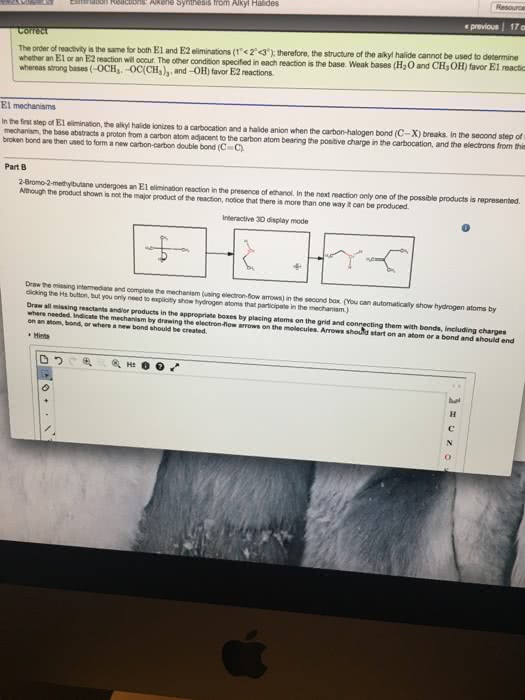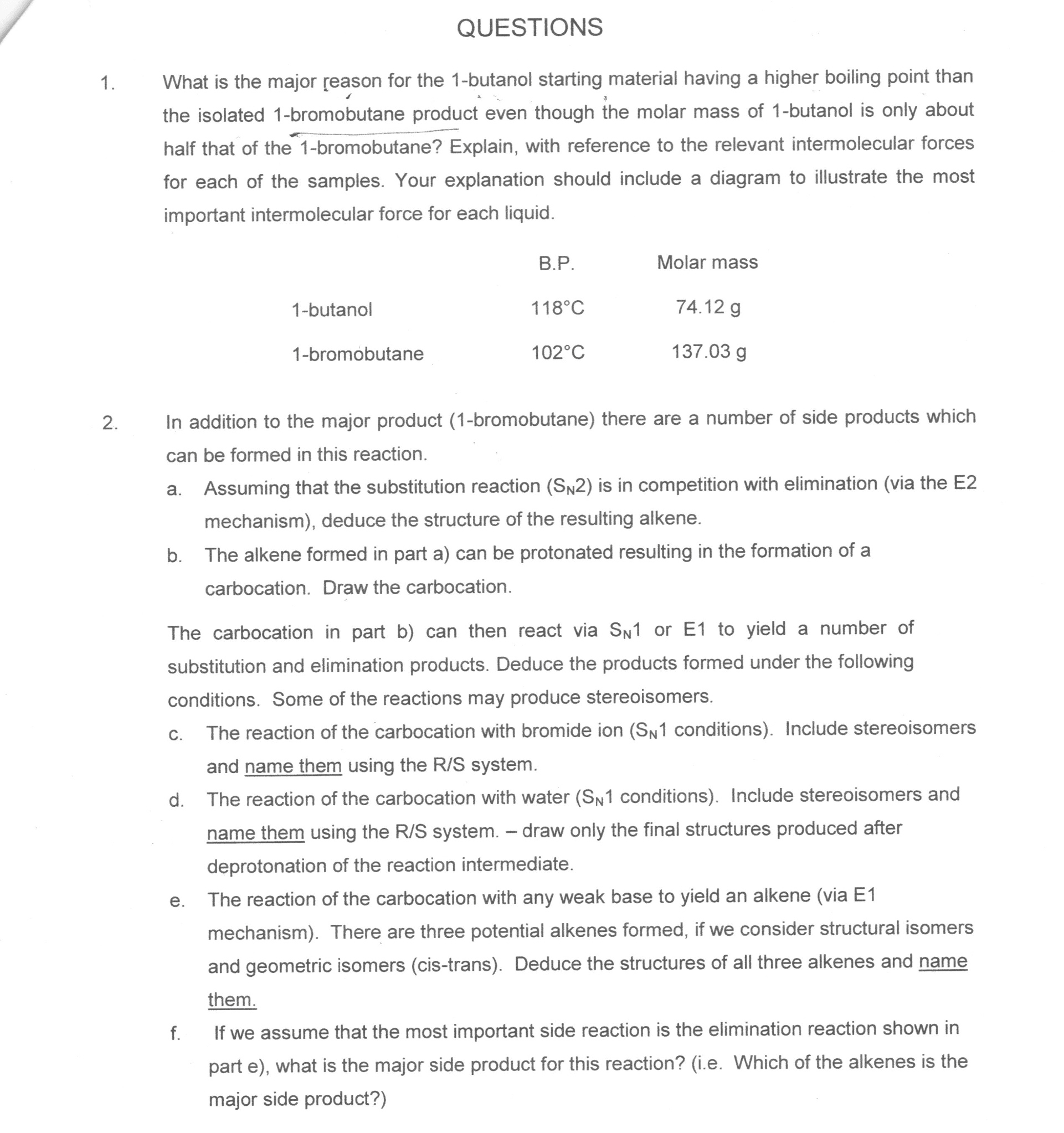CHEM 281 Chapter Notes - Chapter 9: Elimination Reaction, Stereoselectivity, Substitution Reaction
91 views2 pages
30 Aug 2018
School
Department
Course
Professor
Document Summary
The only elimination reactions that primary and secondary alkyl halides undergo are e2 reactions. Tertiary alkyl halides undergo both e2 and e1 reactions. For alkyl halides that can undergo both e2 and e1 reactions, the e2 reaction is favored by a strong base) and the e1 reaction is favored by a weak base (that is, a weakly basic solvent). An e2 reaction is stereoselective: anti elimination is favored. If the b-carbon has two hydrogens, then both e and z stereoisomers are formed; the one with the largest groups on opposite sides of the double bond is formed in greater yield because it is more stable. If the b-carbon is bonded to only one hydrogen, then only one alkene is formed in an. E2 reaction; its structure depends on the structure of the alkyl halide. Both e and z stereoisomers are formed regardless of the number of hydrogens bonded to the b-carbon.
Get access
Grade+20% off
$8 USD/m$10 USD/m
Billed $96 USD annually

Homework Help
Study Guides
Textbook Solutions
Class Notes
Textbook Notes
Booster Class
40 Verified Answers
Class+
$8 USD/m
Billed $96 USD annually

Homework Help
Study Guides
Textbook Solutions
Class Notes
Textbook Notes
Booster Class
30 Verified Answers
Related textbook solutions
Chemistry: Structure and Properties
2 Edition,
Tro
ISBN: 9780134293936
Basic Chemistry
5 Edition,
Timberlake
ISBN: 9780134138046
Principles of Chemistry Molecular Approach
4th Edition,
Tro
ISBN: 9780134112831
Principles of Chemistry Molecular Approach
3rd Edition, 2014
Tro
ISBN: 9780321971944
Chemistry: Structure and Properties
2nd Edition,
Tro
ISBN: 9780134293936
Chemistry: A Molecular Approach
3rd Edition,
Tro
ISBN: 9780321809247
Chemistry: A Molecular Approach
5th Edition,
Tro
ISBN: 9780134874371
Principles of Chemistry: A Molecular Approach
4th Edition,
Tro
ISBN: 9780134895741
Chemistry: The Central Science
14th Edition, 2017
Brown
ISBN: 9780134414232

